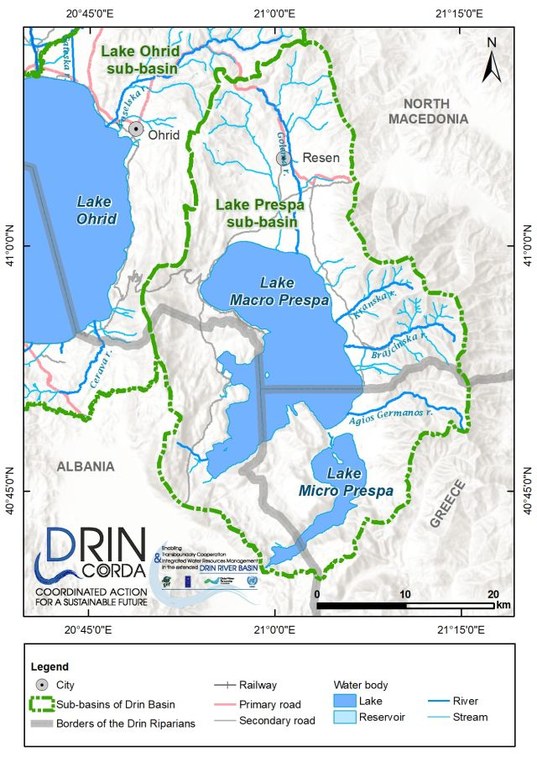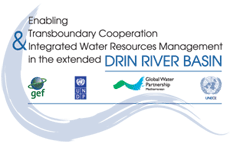Lake Prespa sub-basin

In the Lake Prespa sub-basin there are two lakes -Micro Prespa and Macro Prespa- which are connected through an artificial canal. Lake (Macro) Prespa is a tectonic lake with an average depth of 16-18 m and an average water residence time of 11-20 years (different figures are given in bibliography). The karst geology of the area between lakes Prespa and Ohrid makes it difficult to define the hydrogeological boundary, resulting in variations among studies regarding the Lake Prespa catchment's dimensions.
The total distribution of water inflows in the Macro Prespa Lake is estimated as follows: 56 percent from surface run-off, 35 percent from direct precipitation and 9 percent from Micro Prespa Lake. From 1976 to 2004, irrigation accounted for approximately 20 percent of the outflow, with 17 percent of total water losses for the same period comprising undefined outflows.
Water shortages in the watershed usually occur from May to September due to increased water demands and decreased precipitation, while at other times of the year there is no water deficit.
Under normal hydrologic conditions, there are no surface outflows.
Water level oscillation causes the Macro Prespa surface area to vary from 259.4 to 280.0 km2 . Water level has fallen by more than 9 m in the last 60 years. Water level peaked during the 1963 flood at 853 m above sea level, falling in the years after, with the sharpest decline occurring between 1986 and 1991.
Even though the reasons for the decline in water level are not fully understood, they are believed to be predominantly related to natural variations in rainfall combined with human extraction and variations in the 'karstic outflow' regime.





